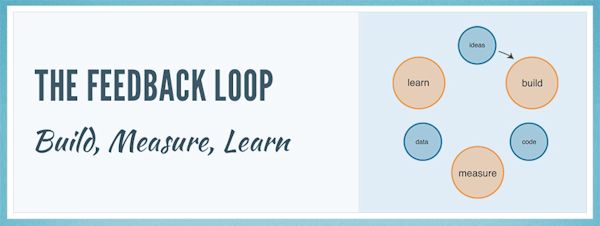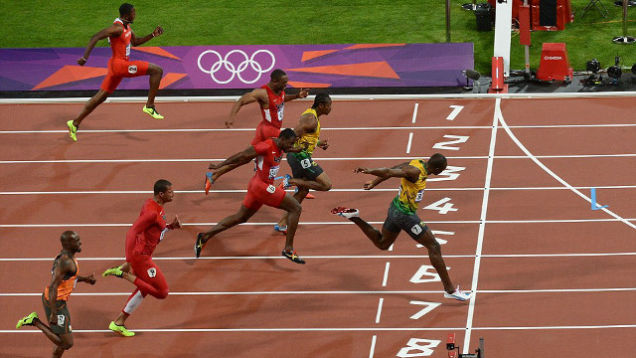“Feedback is the breakfast of champions.” ~Ken Blanchard
There are winners and there are losers. No one is truly a loser until and unless they stop improving and moving forward. Sure, we may fail at a particular time. This is expected because no one is perfect. Even those people that are the most talented have risen to the top of their chosen profession because they made improvements. How do we become more successful in our endeavors? We do it through the feedback of failure. Yes, when we fail it’s a sign that we have gotten off of track and need to make adjustments. You’re not expected to do a new thing right the first time out. You need to fail to discover what doesn’t work for you. Each time you do this and make the necessary adjustments it’s what is known as a “feedback loop.”
“I think it’s very important to have a feedback loop, where you’re constantly thinking about what you’ve done and how you could be doing it better. I think that’s the single best piece of advice: constantly think about how you could be doing things better and questioning yourself.” ~Elon Musk
I remember first reading about W. Edwards Deming and his 14 points. One of the principles was that of continuous improvement. While his focus was on manufacturing, that same principle can be applied any area of life. The Japanese took all his ideas and ran with it. Feedback is needed to help make improvements. This is true of business, sports and life. A child falls down. He gets back up and learns not to fall the same way. I know that every time I got hurt as a child, it was never the same way twice. Sure, I got 3rd degree burns one year on my right thigh and leg, a big gash on my forehead another year and nearly blinded in my right eye by a BB Gun still another year. Every single incident was due to my actions. I learned. I also learned that making mistakes is the biggest part of learning when you use it as feedback. A feedback loop allows one to get immediate data from their actions. This in turn, leads to the evaluation of the data in order to make an adjustment. From there a new action takes place leading to a consequence (positive or negative). More data is created and the loop continues all the way to the accomplish of a goal or otherwise.  A feedback loop can be instituted for product creation as well. Think about it, getting immediate feedback to whether your product or service is viable is certainly valuable, isn’t it? This will help the entrepreneur to create the right product instead of falling in love with something that may never sell. Start with the “minimal viable product” and build out from there based on the feedback. In sports, the feedback loop is used with great success. This is where the differentiation of the average athlete from the great athlete takes place. The great athlete realizes that he or she must continuously make improvement. Getting the right feedback is necessary to do just that. In some sports, the difference of even 1/100 of second is important. Making adjustments to gain that slight advantage is huge. Through feedback, the athlete and coach can see whether they are on the right track or going off course. To create an effective feedback loop one would need some way of capturing needed data. This will be different in different arenas. I would suggest asking around of the best ways to do that for your area. You can start by using a journal as basic way of gathering data and documenting it. If you’re a coach, then giving the necessary data back to the coachee in a way that he or she can understand it (emotionally and rationally) is key. If you’re receiving the data directly back to yourself for yourself, then you should have a system in place so that you can interpret it better. The 3rd stage is that of a consequence. In a sense, you should be able to show 2-3 paths in which to take. Finally, taking action after possible choices are presented. The reason I stated 2-3 paths for the choices is that any more and the brain tends to not make a decision. Many studies have shown this and even the U.S. Marines instituted the “Rule of Three” based on some of these studies. As stated before, once an action is put into play, get the data to start the feedback loop all over again. Now, start your own feedback loop in various areas of your life. Cheers, Bob Choat, “Transformational Master Black Belt”
A feedback loop can be instituted for product creation as well. Think about it, getting immediate feedback to whether your product or service is viable is certainly valuable, isn’t it? This will help the entrepreneur to create the right product instead of falling in love with something that may never sell. Start with the “minimal viable product” and build out from there based on the feedback. In sports, the feedback loop is used with great success. This is where the differentiation of the average athlete from the great athlete takes place. The great athlete realizes that he or she must continuously make improvement. Getting the right feedback is necessary to do just that. In some sports, the difference of even 1/100 of second is important. Making adjustments to gain that slight advantage is huge. Through feedback, the athlete and coach can see whether they are on the right track or going off course. To create an effective feedback loop one would need some way of capturing needed data. This will be different in different arenas. I would suggest asking around of the best ways to do that for your area. You can start by using a journal as basic way of gathering data and documenting it. If you’re a coach, then giving the necessary data back to the coachee in a way that he or she can understand it (emotionally and rationally) is key. If you’re receiving the data directly back to yourself for yourself, then you should have a system in place so that you can interpret it better. The 3rd stage is that of a consequence. In a sense, you should be able to show 2-3 paths in which to take. Finally, taking action after possible choices are presented. The reason I stated 2-3 paths for the choices is that any more and the brain tends to not make a decision. Many studies have shown this and even the U.S. Marines instituted the “Rule of Three” based on some of these studies. As stated before, once an action is put into play, get the data to start the feedback loop all over again. Now, start your own feedback loop in various areas of your life. Cheers, Bob Choat, “Transformational Master Black Belt”  Mind Hacker Growth Hacker Life Hacker America’s #1 Mind-Body Transformation Expert and author of Mind Your Own Fitness References: Blank, Steven G. (2006) “The Four Steps to the Epiphany.” Published by Steven G. Blank Deming, W. Edwards. (1982) “Out of the Crisis.” MIT Press: Cambridge, Mass Goetz, Thomas. “Harnessing the Power of Feedback Loops.” Wired Magazine (2011) Retrieved on 2/16/2015 from http://www.wired.com/2011/06/ff_feedbackloop/all/ Maurya, Ash (2012) “Running Lean.” O’Reilly Media: Sebastopol, CA
Mind Hacker Growth Hacker Life Hacker America’s #1 Mind-Body Transformation Expert and author of Mind Your Own Fitness References: Blank, Steven G. (2006) “The Four Steps to the Epiphany.” Published by Steven G. Blank Deming, W. Edwards. (1982) “Out of the Crisis.” MIT Press: Cambridge, Mass Goetz, Thomas. “Harnessing the Power of Feedback Loops.” Wired Magazine (2011) Retrieved on 2/16/2015 from http://www.wired.com/2011/06/ff_feedbackloop/all/ Maurya, Ash (2012) “Running Lean.” O’Reilly Media: Sebastopol, CA
